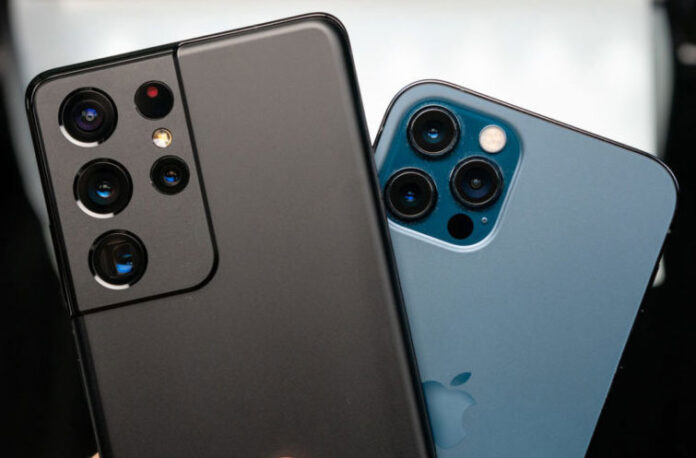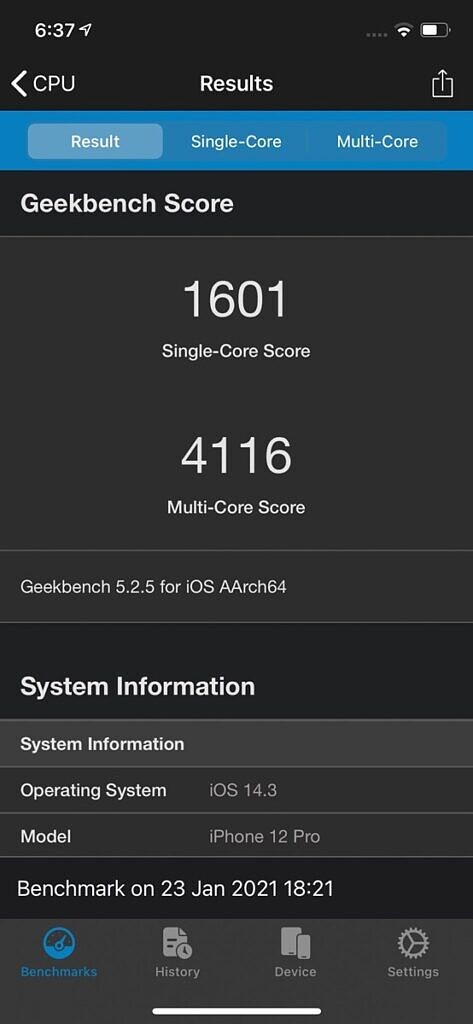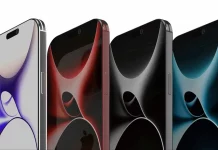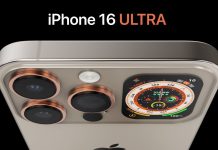Samsung’s Galaxy S series is usually the standard-bearer for Android smartphones – especially in North America then it’s only natural that they get compared to Apple’s iPhones. during this comparison, we’re getting to pit the 2 “middle-child” devices Apple’s and Samsung’s latest flagships against one another how does the Samsung Galaxy S21 Plus fare against the iPhone 12 Pro?
Samsung Galaxy S21+ vs Apple iPhone 12 Pro: Specifications and Comparison
| Specifications | Samsung Galaxy S21+ | Apple iPhone 12 Pro |
|---|---|---|
| Build | Aluminum mid-frameGorilla Glass backGorilla Glass Victus front | Stainless steel mid-frameGlass front and back“Ceramic Shield” for glass protection |
| Dimensions & Weight | 161.4 x 75.6 x 7.8mm202 grams | 7.4 x 146.7 x 71.5mm187 grams (Global)189 grams (USA) |
| Display | 6.7″ FHD+ Dynamic AMOLED 2X display2400 x 1080 pixels394 PPI120Hz variable refresh rate20:9 aspect ratio1300nits peak brightnessHDR10+Always-On displayInfinity-O display | 6.1″ Super Retina XDR OLED Display2,532 x 1,170 resolution, 460 PPI |
| SoC | International: Exynos 2100:1x Core @ 2.9GHz +3x Cores @ 2.8GHz +4x Cores @ 2.4GHzUSA and China: Qualcomm Snapdragon 888 | Apple A14 Bionic SoC |
| Ram & Storage Options | 8GB + 128GB8GB + 256GB | 128GB (Ram not disclosed)256GB (Ram not disclosed)512GB (Ram not disclosed) |
| Battery & Charging | 4,800mAh25W USB Power Delivery 3.0 fast charging15W wireless charging4.5 reverse wireless chargingNo charger in the box in most regions | 2,815 mAh battery as per certification listings15W Wireless Charging with MagSafe7.5W Qi Wireless ChargingNo charger in the box |
| Security | Ultrasonic In-Display Fingerprint Scanner | Face ID (TrueDepth camera for facial recognition) |
| Rear Camera(s) | Primary: 12MP, wide-angle lens, f/1.8, 1/1.76″, 1.8µm, OIS, Dual Pixel PDAFSecondary: 12MP, ultra-wide-angle lens, f/2.2, 1/2.55″, 1.4µmTertiary: 64MP, telephoto lens, f/2.0, 1/1.76″, 0.8µm, PDAF, OIS | Primary: 12MPSecondary: 12MP, Ultra-wide angleTertiary: 12MP telephoto |
| Front Camera(s) | 10MP, f/2.2, 1.22µm, Dual Pixel PDAF | 12MP, f/2.2 |
| Port(s) | USB 3.2 Type-C | Proprietary Lightning port |
| Connectivity | Bluetooth 5.1NFCWi-Fi 65G | 5G: Sub 6GHzmmWave for the USAUltra-Wide Band (UWB)Wi‑Fi 6 (802.11ax) with 2×2 MIMOBluetooth 5.0 |
| Software | Samsung One UI 3.1 based on Android 11 | iOS 14 |
| Other Features | IP68 | IP68 |
| Pricing | Starts at $999 | Starts at $999 |
Design and Hardware
One of the fun things about using Android is that brands are more willing to modify their style up year to year. And so, while the iPhone 12 Pro mostly seems like the iPhone 11 Pro on the front and therefore the back, which itself didn’t look too different from the iPhone XS and iPhone X, the Galaxy S21 Plus features a mostly never-before-seen design because of its unique looking camera module. Dubbed “contour cut” by Samsung, half the Galaxy S21’s camera module blends seamlessly into the aluminum chassis. It’s a glance and style that hasn’t been done before and provides the Galaxy S21 Plus a striking look.
The iPhone 12 Pro has that now-iconic iPhone notch around the front, while the Galaxy S21 Plus is usually an uninterrupted display but little hole punch-out. Back within the pre-pandemic days, one could argue the iPhone notch is worthwhile because Face ID is so useful – but in today’s age of constant mask-wearing, having face recognition because the only sort of biometric security has become an enormous hassle. once you consider that the in-display fingerprint sensor of the Galaxy S21 series has improved once more (it’s 1.7x larger than last generation’s sensors), it’s a no brainer I’ll take a little hole-punch over a notch any day. The Galaxy S21 Plus’ display also gets brighter (at a max 1500 nits brightness), refreshes at a better rate (dynamically adjusting between 48Hz and 120Hz), and features a higher resolution.
While I personally prefer the Galaxy S21 Plus’ looks over the iPhone 12 Pro, that’s just my subjective opinion. When it involves construction and sturdiness, the iPhone 12 Pro is objectively more sturdy, thanks to the flat chrome steel railings compared to the Galaxy S21 Plus’ thinner aluminum chassis. thereupon said, however, I find the Galaxy S21 Plus easier to carry thanks to its narrower ratio and more rounded sides.
Software and Special Features
The Galaxy S21 Plus runs One UI 3.1 over Android 11; the iPhone 12 Pro runs iOS 14. There’s not much point in comparing both the OS too in-depth, as all sides have their loyalists who are firmly entrenched within those ecosystems. I personally prefer Android over iOS thanks to the additional customization, a more coherent file system, and therefore the ability to run two or more apps at an equivalent time. One UI 3.1, unlike previous Samsung software skins, doesn’t interrupt with Android an excessive amount of, and therefore the additional features it brings are mostly welcomed, except all the bloat Samsung apps like Bixby.
Where Apple’s iOS wins is ecosystem integration. Whether it’s sending files from an iPhone 12 Pro to a MacBook via AirDrop, or recording a voice memo on an Apple Watch and have that file immediately be available on the iPhone or iPad, or the way you’ll use an iPhone as a foreign control for Apple TV, there’s just a more mature ecosystem of products, closer integration, and superior third-party app support to Samsung’s ecosystem. Samsung is trying and making progress, however: the Galaxy Buds Pro that was released alongside the Galaxy S21 series can switch between the Galaxy S21 Plus and, say, a Galaxy Tab S7. The Galaxy Watch 3 that was released in late 2020 is additionally arguably the foremost capable Android smartwatch and comes as on the brink of the Apple Watch 5 as the other wearable. There’s still much room to enhance, so Apple goes ahead during this one.
The Galaxy S21 Plus is more versatile as a computer, however, since its software can double as a personal computer if you plug it into a screen and pair it with a keyboard Samsung calls this feature DeX. The iPhone 12 Pro remains just a phone.
Performance
With 5nm chips powering each device neither phone is brief on raw horsepower. Technically speaking, Apple’s A14 Bionic still beats Qualcomm’s Snapdragon 888 in benchmarks, but it’s not just like the gap is tangible in real-world usage scenarios.
In fact, the Galaxy S21 Plus sometimes feels faster, mostly due to that 120Hz refresh rate. Basic animations like closing apps feel zippier on the Galaxy S21 Plus than on the iPhone 12 Pro.
Gaming on both phones is completely no issue, needless to say. Editing videos seems to be superior on the iPhone 12 Pro the native camera app allows trimming and cropping, to not mention it renders faster than on the Galaxy S21 Plus, but a part of this is often thanks to software quite just raw processing power.
Cameras
Both phones have a triple camera system covering the now standard wide, ultra-wide, and telephoto focal lengths. The iPhone 12 Pro keeps it according to a trio of 12MP sensors, while the Galaxy S21 Plus uses a 12MP sensor for its main and ultra-wide, but uses a 64MP sensor for zooming.

In theory, the Galaxy S21 Plus’ more pixel-dense telephoto camera should be better at zooming further because there are more pixels for Samsung to play with to make what’s essentially a digital magnification of a picture. But in practice, each phone trade wins counting on the focal distance. generally, the Galaxy S21 Plus goes to supply a sharper shot at 10x, but at 2x, The iPhone 12 Pro’s 2x zoom shots are consistently sharper than the same shots by the S21 Plus.
But push that zoom up to 10x, then the Galaxy S21 Plus takes the lead due to having more pixels for Samsung’s software to play with.
The Galaxy S21 Plus can push zoom beyond 10x, up to 30x maximum. But ultimately, because the Galaxy S21 Plus uses a basic telephoto camera lens setup and not a Periscope lens, its zooming prowess is restricted.

As for the opposite two cameras (main and ultra-wide), both phones produce excellent photos that are almost too on the brink of call during the day. generally, the Galaxy S21 Plus’s 12MP sensor takes in additional light, but this also means photos with stark contrast like shadows lose a number of their mood. The iPhone 12 Pro also keeps color more accurate almost to a fault, as a number of the indoor shots exhibit a blue-ish tint thanks to the curtains in my co-working space. Samsung tends to repair colors slightly to supply what it thinks are punchier shots.
In low light situations, however, the iPhone 12 Pro consistently produced sharper images with less noise. It helps Apple’s case that its night mode kicks in automatically and feels rather seamless, whereas on the Galaxy S21 phones you’ve got to swipe to the “more” section of the camera app to manually mention night mode.
this is often good for average users, but users preferring to be on top of things of the shot would appreciate Samsung’s approach. to modify off Night Mode on the iPhone 12 Pro, you would like to tap on the yellow icon on the upper left corner of the viewfinder then manually change the dial to 0 a maneuver that’s never quick and ideal.
The iPhone 12 Pro also takes the win in video performance — although the gap this year is closer than ever. within the video samples below, you’ll see the Galaxy S21 Plus keeps up with the iPhone 12 Pro in dynamic range and even basic stabilization as I walk. However, once I panned the camera quickly at the 0:10 mark, the Galaxy S12 Plus footage suffers from the standard micro-jitters that have always affected Android phones more so than iPhones. At night, the Galaxy S21 Plus’ micro-jitter problem increases, but it also brings in additional light than the iPhone 12 Pro in dark areas, most notably the shadow-drenched plants at the 0:24 mark.
Battery Life
In terms of endurance, the Galaxy S21 Plus’ 4,800 mAh cell is significantly larger than the iPhone 12 Pro’s 2,815 mAh battery (as per certification listings). However, factoring that the Galaxy S21 Plus’s display is more power-hungry, and Android phones are less battery-efficient than the iPhone 12 Pro, endurance could also be close. I even have used the iPhone 12 Pro extensively and located battery life to be good but not great – I expect an equivalent out of the Galaxy S21 Plus, but we’ll update this once we’ve spent longer with Samsung’s new phone.
Which one do you have to buy?
Both the Galaxy S21 Plus and iPhone 12 Pro offer excellent build quality, top processing power, and really capable cameras during day or night. However, while the iPhone 12 Pro’s camera system is extremely on the brink of Apple’s top offering (the iPhone 12 Pro Max’s camera improvements are very subtle), the Galaxy S21 Plus’ camera system may be a clear notch below the Galaxy S21 Ultra‘s. The latter features a much more powerful zoom camera and extra features just like the ability to require macro shots.
This means those that choose the iPhone 12 Pro understand they’re getting an experience that’s on the brink of the absolute best of Apple’s tech, but Galaxy S21 Plus buyers will need to affect the very fact their device may be a fairly noticeable step down from Samsung’s apex offering.
As someone who’s tested all four iPhone 12s and every one three Galaxy S21s extensively, I’d say this: if you opt to shop for an iPhone, the iPhone 12 Pro may be a more sensible choice than the iPhone 12 Pro Max. But with Samsung, it’s flipped: the Galaxy S21 Ultra is well worth the extra cash over the Galaxy S21 Plus.























